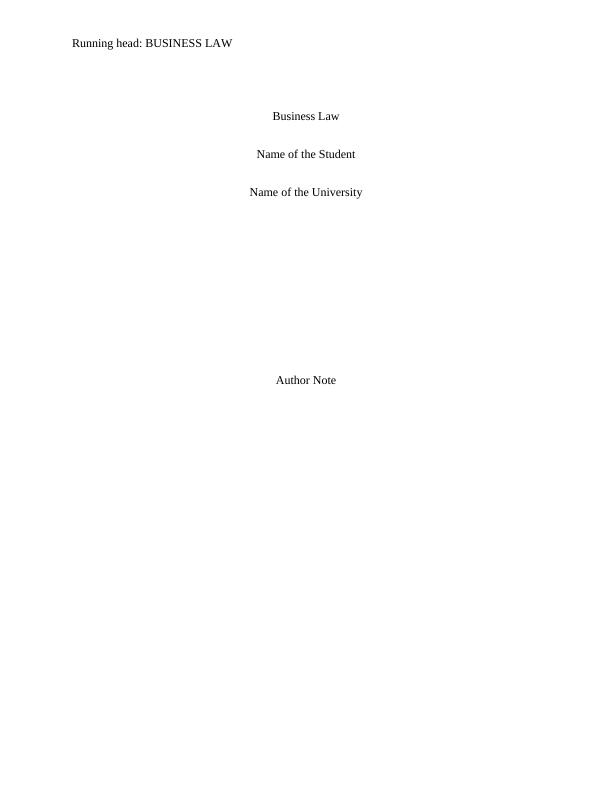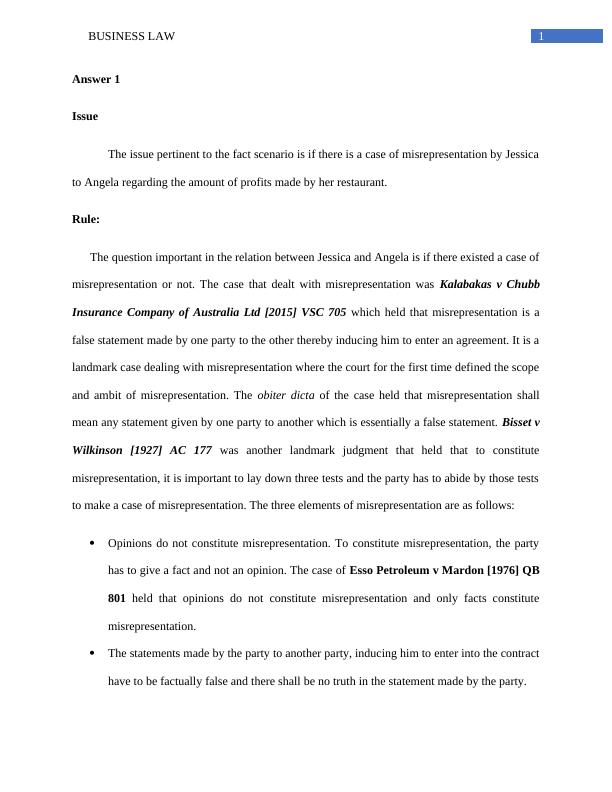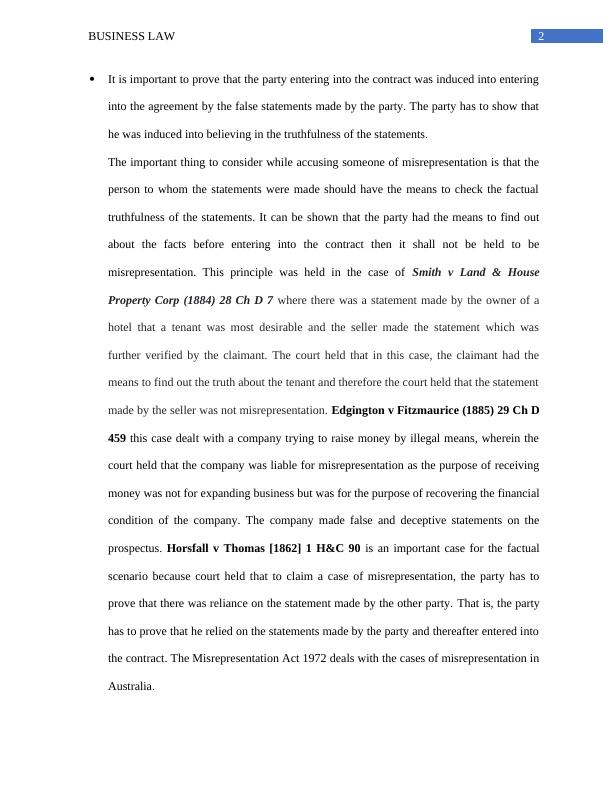Business Law: Misrepresentation and Negligence Cases
Demonstrate knowledge of Australian Business Law, analyze legal issues, interpret legislation and cases, understand compliance and apply law to enterprises.
9 Pages2325 Words477 Views
Added on 2023-06-11
About This Document
This article discusses misrepresentation and negligence cases in business law with solved examples. It explains the rules and applications of duty of care, breach of duty, and causation. The article cites landmark cases such as Donoghue v Stevenson, Derry v Peek, and Smith v Land & House Property Corp. It also discusses the Misrepresentation Act 1972 and the provisions of civil liability and common law, 2002.
Business Law: Misrepresentation and Negligence Cases
Demonstrate knowledge of Australian Business Law, analyze legal issues, interpret legislation and cases, understand compliance and apply law to enterprises.
Added on 2023-06-11
ShareRelated Documents
End of preview
Want to access all the pages? Upload your documents or become a member.
Business Law Legal Issue - Assignment
|9
|2356
|138
Business Law: Misrepresentation and Negligence
|9
|2316
|259
Business Law Assignment - Misrepresentation and Negligence
|8
|2361
|127
Business Laws
|10
|2352
|462
Assignment Solution on Business Law (pdf)
|9
|2342
|28
Common Law - Assignment Sample
|8
|2339
|16



